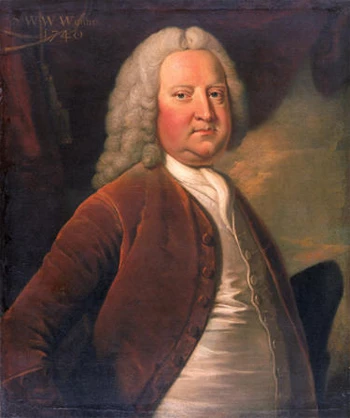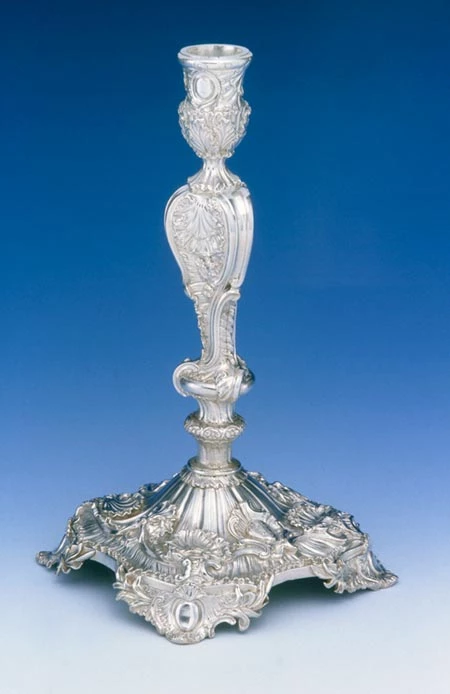One of the wealthiest families of Wales
Williams-Wynn of Wynnstay
Sir Watkin Williams Wynn (1693-1749) - 1740, oil on canvas. 76.2 x 63.2 cm
The Williams-Wynn family of Wynnstay in Denbighshire emerged as one of Wales's wealthiest in the early 18th century, a status they were to retain for over two hundred years.
Several members of the family had an interest in the arts, and Sir Watkin Williams-Wynn (1749-1789), 4th baronet, was to be one of Wales's greatest patrons of the visual arts and music. Much of his collection is now housed at Amgueddfa Cymru.
'The great Sir Watkin'
Sir Watkin Williams-Wynn (1693—1749), 3rd baronet, was the greatest landowner in Wales during the 1730s and 1740s, and a national leader of the Tory party in the House of Commons.
He was the grandson of the politician Sir William Williams (1633/4—1700) who had acquired estates in Denbighshire and Shropshire. However, much of his great wealth was not passed down from his farther, but was generated by to a series of fortunate inheritances from female relations.
In 1719 he inherited the Wynnstay estate in Denbighshire, together with other lands in Caernarfon and Merioneth from his mother's cousin, Sir John Wynn.
In 1715 he had married the younger daughter of Edward Vaughan of Llwydiarth, and by 1725 the death of his wife's parents and older sister had brought him further estates in Montgomery, Denbigh, and Merioneth.
He now owned over 100,000 acres, worth between £15,000 and £20,000 a year, which also gave him great influence over parliamentary elections.
On the death of his wife Ann Vaughan in May 1748, Wynn married his god-daughter Frances Shakerley (1717—1803). Their son, also Sir Watkin Williams-Wynn, and the 4th baronet, was born in April 1749.
Wynn, who was known as 'the great Sir Watkin' and 'the Prince of Wales', was killed in a hunting accident in September 1749.
There are two portraits of 'the great Sir Watkin' in the collections of Amgueddfa Cymru . One of these is the work of Thomas Hudson a fashionable London portraitist who produced polished formal likenesses.
The other is a pastel by William Hoare of Bath, and one of a group of pictures commissioned by Wynn's associate Lord Lichfield.
Wealth and cultural sophistication
Candlestick made in 1734 by the French protestant silversmith Lewis Pantin in the newly fashionable rococo style.
Two pieces of silver also reflect the wealth and cultural sophistication of Wynnstay in his time. These are a pair of large candlesticks, and a massive tripod stand for a tea kettle.
The candlesticks were made in London in 1734 by the French protestant silversmith Lewis Pantin, and are chased and cast with flowers, shells and scrolls —in the newly fashionable rococo style. They formed part of a set of four and are listed in an inventory of silver made on Sir Watkin's death.
A small amount of silver purchased by the family in 1720 survives as an extraordinary rarity as only a handful of these pieces of silver furniture have escaped being melted down for reuse.

